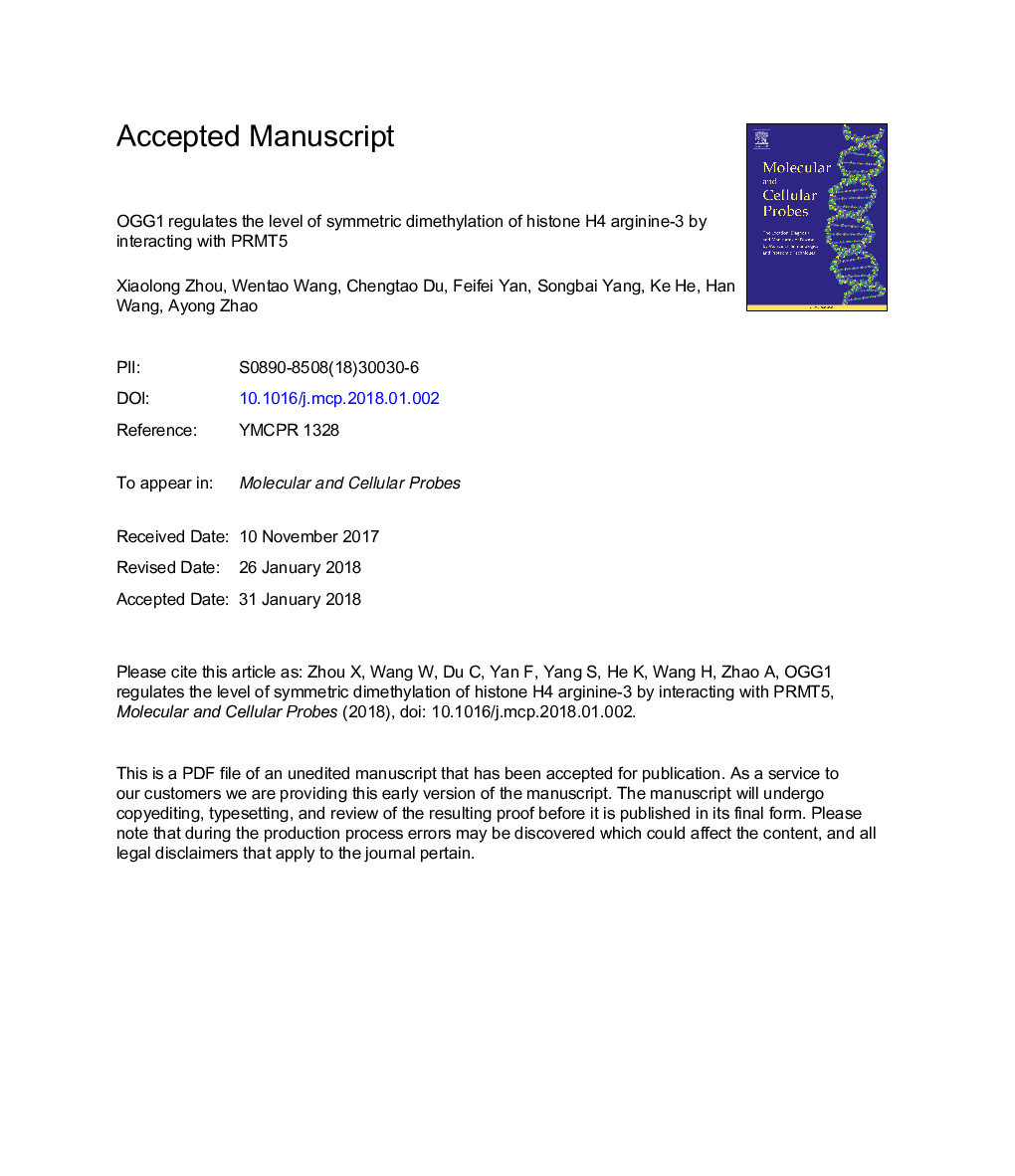| Article ID | Journal | Published Year | Pages | File Type |
|---|---|---|---|---|
| 8478738 | Molecular and Cellular Probes | 2018 | 26 Pages |
Abstract
OGG1 is the first enzyme in the base excision repair pathway (BER) responsible for repairing 8-oxoguanine DNA lesions. Recent studies found that OGG1 may also be involved in epigenetic regulation. In this study, we focused on the roles of OGG1 in histone modification. First, to study the effects of OGG1 on histone modification, the protein levels of symmetric dimethylation of histone H4 arginine-3 (H4R3me2s) were determined by western blot analysis following the knockdown or overexpression of OGG1. Second, the molecular mechanisms by which OGG1 regulates H4R3me2s were assessed by co-immunoprecipitation (CO-IP) assays in mouse embryonic fibroblast (MEF) wild-type (WT) and Oggâ/â cells. Finally, to verify the regulation of H4R3me2s by OGG1 on specific genes, chromatin immunoprecipitation (CHIP) was performed on MEF WT and Oggâ/â cells. We found that OGG1 affects PRMT5 binding on histone H4 and the formation of H4R3me2s via PRMT5. The methylation level of H4R3me2s was dramatically decreased in MEF Oggâ/â cells compared to WT cells. Knockdown of OGG1 by siRNA led to a decrease in H4R3me2s, while overexpression of OGG1 increased the level of H4R3me2s. OGG1 also interacted with PRMT5 and histone H4, and the interaction between PRMT5 and histone H4 was reduced in MEF Oggâ/â cells. Our data not only illustrate the important roles of OGG1 in histone modification, but also reveal the mechanism by which OGG1 affects PRMT5 binding on H4R3 resulting in the symmetrical dimethylation of histone H4 arginine-3.
Keywords
Related Topics
Life Sciences
Biochemistry, Genetics and Molecular Biology
Cell Biology
Authors
Xiaolong Zhou, Wentao Wang, Chengtao Du, Feifei Yan, Songbai Yang, Ke He, Han Wang, Ayong Zhao,
